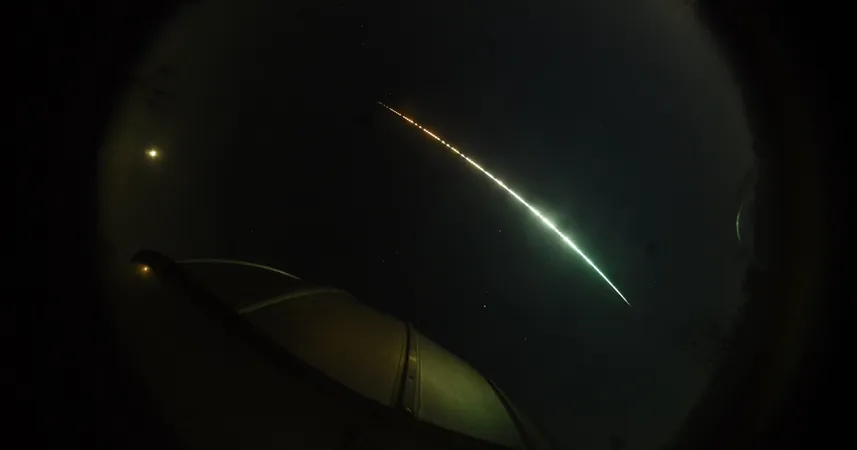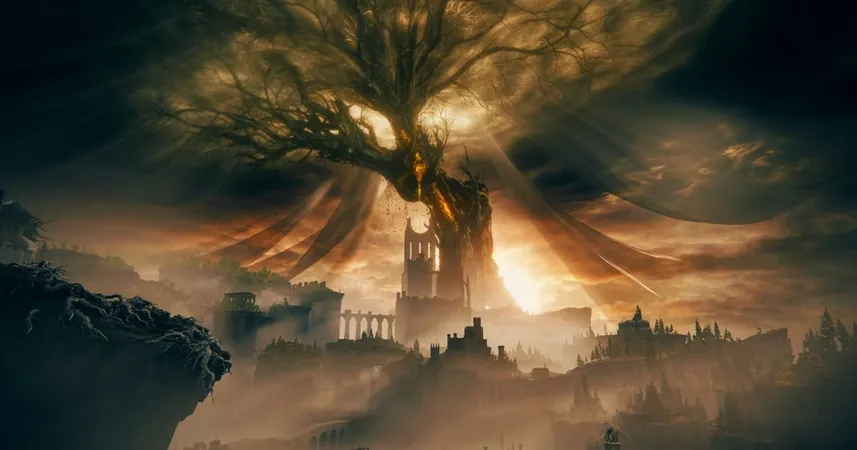
Scientists Uncover Groundbreaking Method for Studying Near-Earth Asteroids—A New Era in Space Research!
2024-11-22
Author: Sophie
In a groundbreaking international study, researchers from Western University and Lowell Observatory have unveiled a revolutionary approach to studying near-Earth asteroids (NEAs), with significant implications for planetary defense and asteroid research. This exciting development comes on the heels of a spectacular fireball event in November 2022, a meteor shower that captivated stargazers and scientists alike as meteorites plummeted to the ground in the Niagara region of Canada.
The team of space scientists meticulously determined the size and composition of the asteroid known as 2022 WJ1, before it dramatically fractured upon entering Earth’s atmosphere. By leveraging high-tech telescopes located in Arizona and synchronized cameras from Western University’s Southern Ontario Meteor Network, scientists were able to capture detailed observations of this unusually bright meteor on November 19, 2022.
Published in The Planetary Science Journal, this study marks a significant leap in the methodology of asteroid characterization, as it is the first instance where both telescopic and ground-based camera data has been used simultaneously to analyze the same space object. “This is only the sixth asteroid discovered before impact,” reveals Denis Vida, an adjunct professor in physics and astronomy at Western.
Using the impressive capabilities of the 4.3-meter Lowell Discovery Telescope (LDT), scientists evaluated the surface properties of WJ1, discovering it to be rich in silica and characterizing its diameter between an astonishing 40 to 60 centimeters (16 to 27 inches). This makes WJ1 the smallest asteroid recorded to date.
“This innovative approach allowed us to confirm our estimates with high precision,” says Vida, highlighting the success of combining both observational techniques. The analysis revealed that WJ1 belongs to the S-chondrite category, known for being rich in silica and consisting of some of the oldest remnants from our solar system.
The combination of data from Western’s fireball observation network and telescopic measurements produced consistent findings regarding the asteroid’s size, composition, and trajectory prior to its fiery descent. “This collaboration highlights our preparedness and underlines the effective teamwork needed to protect Earth from potential asteroid impacts,” stated Teddy Kareta, a postdoctoral associate from Lowell Observatory.
While initial searches for meteorite fragments have yielded no physical findings, there remains hope. Residents in the Niagara region are still looking for remnants, but much of the predicted fall area ends beneath Lake Ontario, muddying potential discovery. "Despite the challenges, there's still a chance we could find meteorites from this event," said Phil McCausland of Western’s Earth Sciences department.
WJ1 was first spotted by the Catalina Sky Survey in Arizona, just hours before its Earth encounter. This unprecedented alert enabled astronomers to refine their predictions about the asteroid’s trajectory, which fortuitously led it to cross over Western’s meteor-observing network. For scientists, this highlighted a momentous opportunity to witness and study a natural fireball event.
Professor Paul Wiegert from Western vividly recalls that night, watching the fireball burst over the skies: “It appeared almost overhead, undeniably beautiful and startling to witness.” The LDT played a crucial role, allowing astronomers the chance to track WJ1 right up until its disappearance in the shadow of Earth.
With each new discovery, such as that of the asteroid WJ1, astronomers are gaining invaluable insights into these cosmic bodies, furthering humanity’s understanding of our solar system and strengthening our defenses against potential threats from space. The work conducted in this study paves the way for future investigations, as scientists gear up to tackle the next near-Earth object that dares to cross our planet’s path.
Stay tuned as this research saga continues, and who knows—maybe the next cosmic adventure lies just around the corner!









 Brasil (PT)
Brasil (PT)
 Canada (EN)
Canada (EN)
 Chile (ES)
Chile (ES)
 España (ES)
España (ES)
 France (FR)
France (FR)
 Hong Kong (EN)
Hong Kong (EN)
 Italia (IT)
Italia (IT)
 日本 (JA)
日本 (JA)
 Magyarország (HU)
Magyarország (HU)
 Norge (NO)
Norge (NO)
 Polska (PL)
Polska (PL)
 Schweiz (DE)
Schweiz (DE)
 Singapore (EN)
Singapore (EN)
 Sverige (SV)
Sverige (SV)
 Suomi (FI)
Suomi (FI)
 Türkiye (TR)
Türkiye (TR)